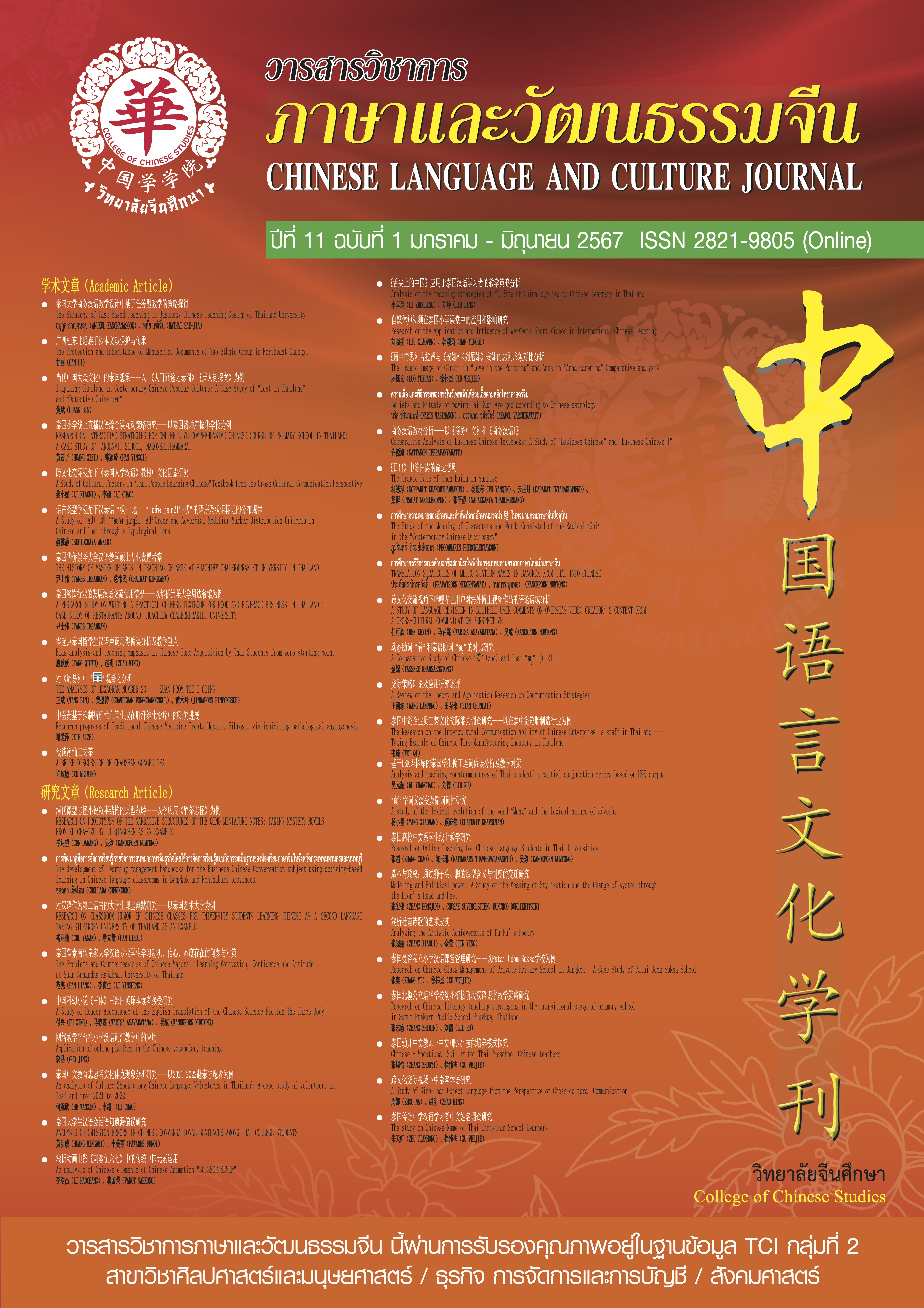An Analysis of the Word "Meng" Lexicality
Abstract
Today, there is a "Meng" trend on the Internet. Various cute cartoon images, cute photos and videos of animals, plants or characters appearing in short videos, online games with the theme of " Meng ", Internet buzzwords with cute attributes, etc. are widely spread on the Internet and are deeply loved by the Internet. Everyone's favorite. "Cute" can refer to any person or thing, from children to the elderly, from pet cats and dogs to deformed anime images, from ancient emperors and generals to Q-version portraits... and so on, can all be considered " Meng ". "Cute", thus reflecting that it is being accepted and liked by the public as a culture, and that it has broadness and universality. This article takes the word " Meng " as the research object to explore the evolution of its ancient and modern meanings, the reasons for its evolution, and the existing controversies. "Meng" has a new part of speech - adverbial part of speech. When the author used the literature research method to collect documents, I found that " Meng " is the most common use as an adjective, meaning " Meng ": "cute" as a verb meaning "like" was more common in the early days, but now it has become marginalized; Another meaning of the verb " Meng " is "to be struck by cute things" which is now very popular. In the early days, " Meng " was often used alone to mean " Meng ". Later, "cute" was often associated with "silly", "dumb", etc. Used together and very popular. But why did previous literature propose the concept of " Meng " as an adverb? Therefore, the author collects corpus based on the corpus, uses semantic comparison to explore the possibility and rationality of the adverbial part of speech of " Meng ", and hopes to provide help and suggestions for future research.
Keywords: cute; adverb; semantics; corpus
References
参考文献
黄伯荣,廖序东:《现代汉语》,北京:高等教育出版社,2012 年版。
许慎撰等注.说文解字.浙江古籍出版社,2009.
白解红.汉语网络流行语“萌”语义演变及认知机制探析.湖北大学学报 ,2014,139-140.
曹慧萍:《浅析网络“卖萌”语言》,《语文知识(语言学研究)》,2013年第4期.
刘贻婷:《从模因论角度浅析“荫”字的流行》,《剑南文学》,2013年第7期.
潘胜泽:《从认知语言学角度试析网络流行语“萌”》,《安微文学》,2013年第9期.
白解红,王莎莎:《汉语网络流行语“萌”语义演变及认知机制探析》,《湖北大学学报(哲学社会科学版),2014年第2期.
白琳:《浅析网络流行语——萌》,《武夷学院学报》,2012 年第3期.
张醌华:《浅析网络用语“萌萌哒”》,《中国校外教育》,2014 年第12期.
郭锡良.古代汉语.商务印书馆,1999.
黄宇雁.“萌”与“萌え”——试析中国流行文化对日本文化的受容. 浙江外国语
学院学报,2012.
呼红宝、蒋长刚.流行语“萌”的模因论阐释.现代语文,2016.
李亚群.浅析日语借词“萌”.语文知识,2012,118-119.
李应.“萌”系网络流行语的语用研究.信阳师范学院,2015.
齐珮.从日语“萌”的语用意义看青年亚文化生态体系特征.外语学刊,2010,87-90.
吴登堂.词义的泛化.辽宁师专学报,32-33,2023.
张校. 基于模因论分析日本流行语传入中国的规律与变化——以"萌"为例. 开封教育学院学报,2019,39(12),3.
朱琴.萌文化流行的心理原因解析. 文学教育,2014.
Downloads
Published
How to Cite
Issue
Section
License
Copyright (c) 2024 Chinese Language and Culture Journal

This work is licensed under a Creative Commons Attribution-NonCommercial-NoDerivatives 4.0 International License.
บทความที่ได้รับการตีพิมพ์เป็นลิขสิทธิ์ของวารสารภาษาและวัฒนธรรมจีน มหาวิทยาลัยหัวเฉียวเฉลิมพระเกียรติ
บทความใน “วารสารวิชาการภาษาและวัฒนธรรมจีน” เป็นทรรศนะของผู้เขียนโดยเฉพาะ กองบรรณาธิการไม่มีส่วนในความคิดเห็นในข้อเขียนเหล่านั้น




